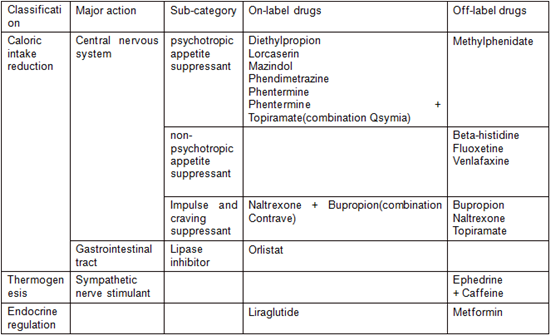
We have looked at major anti-obesity drugs in the last three articles focusing on the history of obesity medications. Before we can discuss each therapy in greater depth, it would help us to briefly cover the classification of anti-obesity drugs that are available today. However, there are obstacles to systematically classify anti-obesity drugs as no official classification systems have been established yet.
I have tried to logically divide the categories of anti-obesity drugs but have found it difficult due to the following reasons. First, there are various etiological factors involved in development of obesity. Therefore, anti-obesity drugs cannot be explained with a single action. Second, most anti-obesity drugs act on the central nervous system and affect various neural transmitters. Third, many of the recent anti-obesity drugs are combinations of existing agents.
Despite these hurdles, currently available data can be used to largely classify the anti-obesity drugs as shown in Table 1. This classification is based on my experience of giving lectures on anti-obesity drugs for several years and is merely a personal reference.

Table 1. Classification of anti-obesity drugs
[Advertisement] FCR® (Fractional Prickle CoralCalcium Regentron) – Manufacturer: (www.illglobal.com)]
Dietary supplements are often mentioned as a type of dieting aid. We will leave dietary supplements out of our discussion as our focus is medical treatments of obesity. The clearest categorization we can make is between the on-label drugs that have been approved for use in obesity and off-label drugs that are used to treat obesity despite lack of approval for the particular indication. Off-label drugs were the mainstay of anti-obesity medication before the introduction of drugs specifically approved for obesity medication and are still widely used to complement or enhance the efficacy of on-label drugs.




















